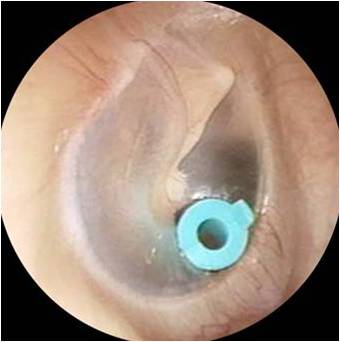Does Your Child Need Ear Tubes?
By Amy S. Whigham, MD, Otolaryngology (ENT) at Brenner Children’s Hospital
Ear infections are an expected part of childhood, but that doesn’t mean they’re harmless. They can be painful, cause a delay in speech development, scar the eardrums and even lead to lifelong hearing loss. Ear tubes can help prevent these risks by reducing the amount and severity of a child’s ear infections.
The insertion of ear tubes is a very common procedure that has been in use for decades. By age 3, about one in 15 children will have ear tubes. Understandably, though, many parents still have questions and concerns about them. In fact, one of the most common requests I get—from the parents of my patients, as well as from my friends and neighbors—is to explain ear tubes. Here’s what I tell them:
Evaluate how many ear infections your child has had. When approaching the subject of ear tubes, the first thing I want to determine is the frequency of a child’s ear infections. If he or she has had around four separate ear infections in a period of about six months, that’s an indicator to me that an evaluation for ear tubes is indicated. Another sign that would lead me to suggest ear tubes would be persistent fluid in one or both of the child’s ears.
Understand the procedure. Ear tubes are tiny cylinders that are surgically inserted into the eardrum to regulate pressure behind the eardrum. This prevents fluid buildup and allows infected ear fluid to flow out from behind the eardrum into the ear canal. The insertion of ear tubes is a fairly simple outpatient procedure that an otolaryngologist will perform while the child is under anesthesia. It usually takes less than thirty minutes. Once an ear tube is inserted, it tends to stay in for about a year, and then falls out on its own.
Consider the benefits of ear tubes. Ear tubes can greatly improve the health of your child’s ears by:
• Eliminating chronic fluid
• Decreasing the frequency of ear infections
• Reducing the pain associated with ear infections
• Making it easier to treat ear infections with antibiotic eardrops, which are associated with fewer side effects than oral antibiotics.
Compare the risks of ear infections with the potential risks of surgery. The insertion of ear tubes is a relatively safe procedure, and serious complications are unlikely. However, with that said, there are a few potential risks associated with ear tubes:
• The general risk of anesthesia during surgery
• Tubes that fall out too early can require another surgery
• Tubes that stay in too long can require another surgery
• Bacteria can build up on the tube
• In rare instances, a hole in the eardrum can occur when the tube falls out
Meanwhile, as I mentioned in the first paragraph, persistent ear infections pose dangers as well.
You should also know that it’s possible to reduce the likelihood of complications from ear tubes. For example, most tubes are now manufactured with an antibacterial coating that can help reduce the odds of a bacterial infection. And, because the chance of having a hole in the eardrum increases when a tube stays in for longer than three years, following up with an otolaryngologist two to three times a year following the procedure can help prevent that danger.
Do what you can on your end to help prevent ear infections. Regardless of whether or not your child gets ear tubes, ear infections are still a possibility. Children who are enrolled in daycare or exposed to secondhand smoke are at highest risk. So, eliminate your child’s exposure to tobacco smoke and, if you can, enroll your child in a daycare with a smaller group setting. Cold viruses can also increase your child’s odds of getting an ear infection, so focus on preventive actions like hand washing.
I’m a big fan of Triad Moms on Main, so reader to reader, let me know if you have any further questions about ear tubes. Feel free to leave a general comment below!







